[ad_1]
Paul Gascoigne charges towards the box, chasing an overhit pass from Steve McManaman. Aaron Winter looks to have intercepted the ball, but Gascoigne’s elbows propel him past the would-be tackler and into a one-v-one with Danny Blind. While everyone is watching the ball, Teddy Sheringham quickly scans the field of play. He has spotted something. Gascoigne flicks a pass into Sheringham’s feet as he breaches the 18-yard box. The Tottenham forward opens his body up, pulling his right foot back as he prepares to unleash a first-time finish.
But he doesn’t. It’s a ruse and everyone falls for it. Johan de Kock loses his footing. The Netherlands goalkeeper Edwin van der Sar is out of position. Rather than shoot, Sheringham cushions a pass into the path of his strike partner Alan Shearer who lashes the ball home to make it 3-0. England go on to win the game 4-1 and advance to the quarter-finals of Euro 96.
Most players in Sheringham’s position would have walloped the ball at goal or taken a touch; few would have had the nous to calculate all the variables in a split second, before fooling everyone with a perfectly disguised pass. His ability to read the game enabled him to outsmart opponents with superior athletic gifts.
As a teenager Sheringham was told he was too slow to reach the highest level of the game. But the boy from east London showed his detractors that a lack of pace could be overcome by intelligence. He evaded defenders across a 32-year playing career and won three Premier League titles, an FA Cup and a Champions League. “People had doubted me through my career, even from saying I wasn’t quick enough for Millwall’s youth team,” said Sheringham, who retired at 42 with 51 caps. “But I’d been given something in life: a football intelligence.”

Asked about football intelligence, most fans would cite Sheringham, along with the likes of Paul Scholes, Andrea Pirlo and Xavi – players who seemed able to pause the game to take in a 360-degree camera angle of the action. But defining the attribute is complicated. Unlike traditional athletic powers, intelligence has no measurable metric. The football brain is frequently referenced by the fans and pundits, but what is it? How does football IQ manifest itself on the pitch? How does the brain coordinate the superhuman actions of a top-level player? And does an elite footballer’s brain have superior powers to that of an amateur turning out on a Sunday morning?
Before poking around a footballer’s brain and 55–70 billion neurons powering 90 minutes of pass and move, we need to know what in-game intelligence looks like through the lens of those at the top level. “Ooofff,” laughs the former Tottenham and Norwich City striker Paul McVeigh. “That’s very difficult to explain.” He pauses. “It’s about the quality of decision-making and the thousands upon thousands of decisions a player has to make during a match every second. The better their understanding of the game, the better their decision-making.”
An elite footballer performs 150–250 intense actions during a game, according to a study in the Journal of Sports Sciences. For every one of those actions, there’s a mass of information to digest – visual cues, instructions from the coach, calculating force and angles, spatial awareness of a wide area – all of which a player has to process in real time to make a quick, potentially game-changing decision. On top of that, they have to (in normal circumstances) cope with the emotion teeming from the stands.
To make sense of this swirling chaos you need to master four disciplines, according to QPR’s technical director Chris Ramsey. “First thing is awareness,” he said. “If you’re a striker, what is your awareness of the person on the ball? You’re asking yourself, ‘Has he got time? Is he going to cross it? What’s his body language?’ Once you’ve ascertained what they’re going to do, what’s your movement? How will you lose the defender? When you see the cross coming in, it’s about your timing – do you go slow or do you go quick? And then, finally, execution: how are you going to finish? What part of the foot do you kick with it? Are you going to bring it down? Can you head it?”
It’s enough to scramble your brain, which is why it requires a higher-functioning mind to decode it. Those that can, scan. This is fundamental to on-pitch awareness. Rather than lose valuable seconds assessing their options once they’re in possession, smart players keep looking over their shoulders as they take mental pictures of their teammates, opponents and the boundaries of the pitch in relation to themselves.
“Teddy didn’t need pace,” the former Arsenal striker Ian Wright said. “He was five yards quicker upstairs. He already knew what was happening before the ball came to him. Dennis Bergkamp was the same. He’d already had a look before receiving the ball. He never wasted a pass, especially when he got into the last third. He’d pass the ball to me in a situation where it negated the defender.”
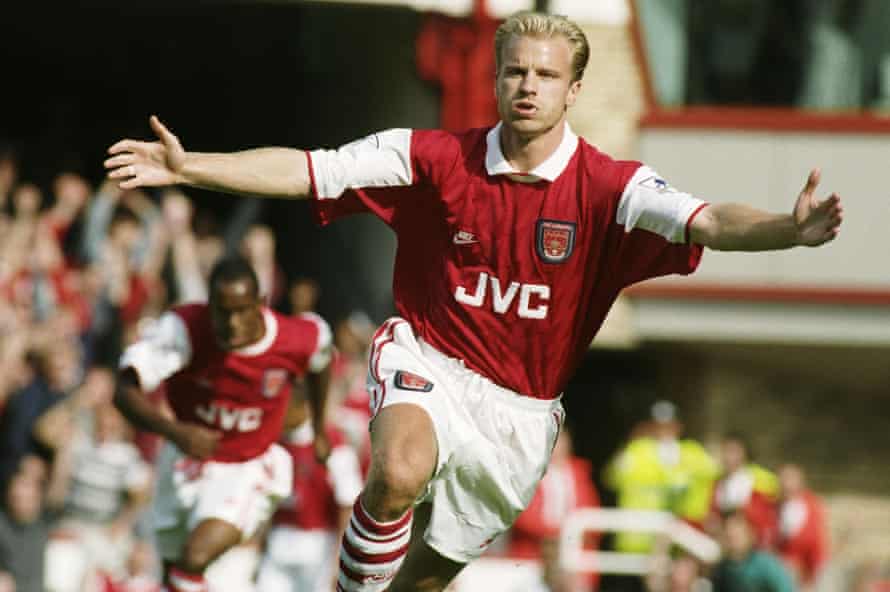
Wright’s observations of the traits displayed by his playmaking teammates align with data collected in 2013. Researchers studied video images of 118 players (midfielders and forwards) from 1,279 game situations in the Premier League and found “the best players explore more frequently” with “a clear positive relationship between visual exploratory behaviours that are initiated before receiving the ball and performance with the ball.”
Scanning enables a player to create a 3D map of what’s around them and then supplement that with what’s been rehearsed in training, the tactical plan and knowledge of the opponent. No player has the capacity to make sense of all this information at once, so the brain hands over to the subconscious, which hits the button on decision-making. “Scanning is not conscious, it’s a primary process,” said Dr John Sullivan, a sports scientist and clinical sport psychologist who has worked with a number of Premier League clubs. “Every millisecond, players are scanning approximately nine bits of essential information – it’s called ‘multiple object tracking’ and they’re taking snapshots for the brain to simulate what might happen.
“The visual system at the back of the brain – the occipital lobe – takes in the information and feeds it to the amygdala and limbic system – our emotional centres. Then we decide without conscious thought, ‘Do I pass the ball, or do I hold because the picture has changed, and it now feels unsafe?’ A decision is made based on patterns before the brain communicates with our motor cortex to move the ball. While the game is chaotic, there are only a certain number of patterns to recognise, so players develop a memory capacity for the game, its patterns and movements.”
However, some things haven’t been rehearsed. They happen in a flash and require specialised hardware. For instance, Jorginho’s assist for Tammy Abraham during Chelsea’s 2-1 win over Watford in November 2019. The Italy international hit an improbable bending pass behind the opposition’s defence for the England striker to dink the ball over Ben Foster. Elite players don’t have a third eye, but the two they have are exceptional.
Researchers from Liverpool John Moores University compared the visual capabilities of 49 Premier League players, 31 intermediate footballers and 230 healthy men and women who are not professional athletes. The footballers, both pro and intermediate, had significantly better vision than the non-athletes, scoring better on tests for visual clarity (ability to see detail at a distance), contrast sensitivity (ability to detect an object against a background) and near-far quickness (ability to change eye gaze and attention between near and far distances).
This explains how Jorginho saw that defence-shredding pass. First he scans, using his powers for multiple object tracking, to inform pass selection. Then his visual clarity and contrast sensitivity help spot Abraham 25 yards away, beyond a cluster of players and against a backdrop of fans. Near-far speed enables him to switch his attention between Mason Mount, from whom he receives a pass, and Abraham.
As this goal demonstrates, no beautiful pass can be complete without the clever movement of a teammate. In this instance, Abraham takes a step away from Watford’s goal to put the defenders on the back foot and create space for him to run into. Then his cerebellum – the part of the brain that controls balance and coordinated movement – kicks in, reading Jorginho’s body movement and using that to predict the trajectory of the pass.
While Christian Kabasele and Craig Dawson are caught on their heels, Abraham is already into his stride, timing his run to perfection. Abraham is blessed with considerable athleticism – speed, size, power and strength – while at the other end of the centre-forward scale, you’ll find the likes of Thomas Müller and Filippo Inzaghi, players with more standout flaws than remarkable gifts.
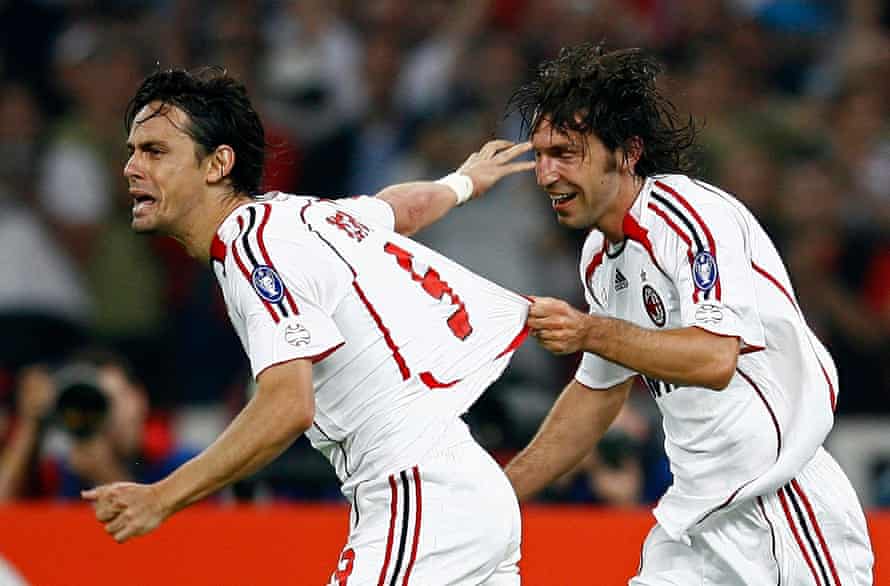
Yet, their unique talent for being “in the right place at the right time” enabled them to score hundreds of goals. “Players with excellent movement have a high processing speed which coincides with their elite emotional management abilities. They’re able to take in more information and understand what it means,” explained Sullivan, co-author of The Brain Always Wins. “When information-processing needs increase, that can overwhelm some players, but if they’re able to stay calm and manage their energy, they can make smarter decisions in a matter of milliseconds.
“This process is a very fast coordination effort of the lower and upper centres of the brain. They are accessing a database of simulations stored in their brain and the more emotional and cognitive resources that are available, the more accurate and quicker the decisions.”
During all the hours of training and playing, elite athletes observe the actions of those around them, activating the brain’s mirror neurons. These brain cells store that information for use later on, either to incorporate that learning into their own game – a skill, for instance – or to predict what their opponent is going to do next.
Imagine being a defender trying to keep your eye on the ball, while maintaining your position and tracking a striker who has the advantage of knowing where their teammate intends to direct his cross. It’s a nightmare. This is why the best defenders, especially those who can’t bail themselves out with pace, are able to sniff out danger. They develop a sixth sense for it.
“My strengths were psychological rather than physical or technical,” said McVeigh, author of The Stupid Footballer is Dead: Insights into the Mind of a Professional Footballer. “I always tried to outsmart defenders, but when I came up against John Terry it was like a four-year-old trying to beat up Tyson Fury. Because he was a world-class defender his expertise was far greater than mine – it’s like he’d already seen all my best moves. He should have just patted me on the head and told me to be on my way.”
There are a number of mechanisms at work in the brain that enable players like Terry to see into the future, as Dr Chuck Leonard of the University of Montana’s Motor Control Laboratory explains. “Anxiety and danger involve the amygdala – a tiny, almond-shaped structure thought to be part of the basal ganglia and therefore responsible for movement characteristics,” he said.
“Planning ahead and realising consequences of your actions and inference lie in the frontal lobe. Amygdala and frontal lobes communicate mainly via the cingulate cortex – an area of the brain intimately connected to memory and emotion. We know there are neurons in the brain referred to as mirror neurons that allow us to recognise faces and the emotions behind facial expressions. Also, obviously involved would be the visual cortex. There are neurons there that specifically respond to movement – size, colour, speed, angle of trajectory and acceleration.”
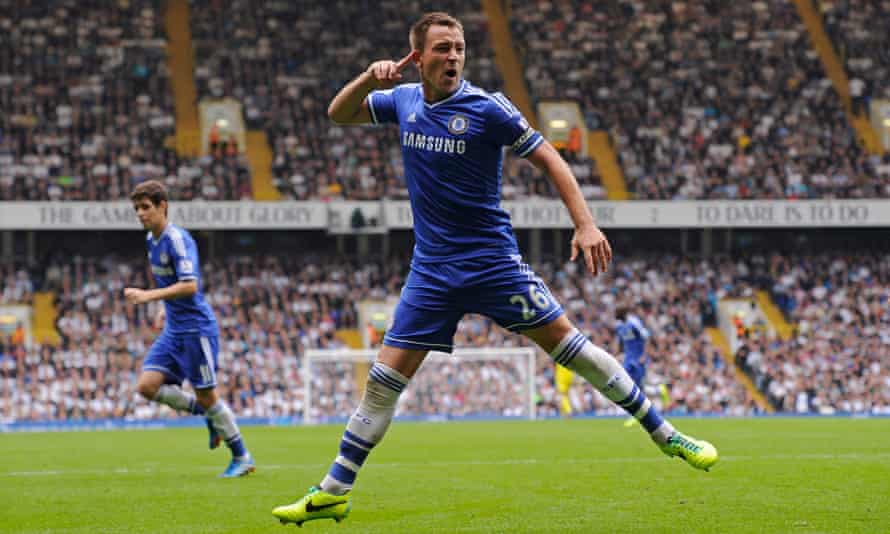
By studying brain scans, Brunel University researchers discovered highly skilled footballers are able to activate more areas of their brain than novices when they see an opponent heading towards them, making them better able to anticipate their moves. The research, published in the Journal of Sport and Exercise Psychology, found that experienced players seem to have developed a “checking” system that suppresses the urge to react instinctively, making them less likely to fall for deceptive feints.
In short, top players watch one another and pick up little clues that others can’t see, while amateurs just watch the ball. “We know if you watch the ball too much, you’re not a high-level processor,” said Sullivan. “The ball is a cue, but the motion of players is what you need to be tuning into.”
The field of play has been scanned, the movement made and the pass released. Now the ball is in flight and it’s all about timing and execution. In March 2000 at Valley Parade, Bradford City are hosting Manchester United. David Beckham takes a corner, striking a flat cross to the edge of the box where Scholes is prowling unattended. The midfielder carefully tracks the trajectory of the ball, timing his take-off to perfection so that he leaves the ground at just the right moment to connect with the cross. A sweetly struck first-time volley flies into the bottom left corner of the net.
Scholes is so chuffed he’s almost laughing in disbelief as he runs over to Beckham to celebrate. Reflecting on the goal, the scorer makes it sound so simple. “We never worked on it in training,” he said. “Becks just took the corner, I gave him a little look to let him know I was there, he delivered it to where I wanted and I volleyed it in. We were on the same wavelength.”
Familiarity forged on the training ground explains the ingenuity behind the goal, but it doesn’t explain the precision of Scholes’ punctuality. Elite players lock their inbuilt targeting system onto the ball like a military-grade weapon. “Tracking an object requires the person to first move their head and eyes to the target, which always results in a slight overshoot, then quickly flick the eyes back to foveate on the target [get the target centred on the optic nerve],” says Dr Leonard. “Elite players move their heads quicker, more accurately and for a slightly greater distance. All of this provides greater accuracy in hitting a target.”
Reacting to stimuli during a game requires awareness, anticipation, quick thinking and vision – qualities which operate on a subconscious level. Hours of training and high-level matches have encoded a player’s cognitive system with the software to handle the demands of a professional game. Tactics, however, occupy another tier of football intelligence. On top of processing the chaos, players have to execute the manager’s instructions. “Football intelligence is about being mentally versatile to roles and responsibilities quickly,” said Ramsey. “Someone who moves from team to team and fits in no problem understands the nuances of different systems.”
Despite being essentially a one-club man, no player exemplifies this adaptability better than Philipp Lahm. Pep Guardiola, who managed Lahm at Bayern Munich between 2013 and 2016, said, “He is one of the most fantastic players I ever trained in my life and one of the most intelligent. He can play in ten positions, no problems because he understands the game perfectly.”
To help implement his new style of play, characterised by fluidity and fluency, Guardiola moved Lahm from right-back into central midfield, where he became one of the best in the world. Arjen Robben and Franck Ribéry were Guardiola’s most dangerous attacking players so the Spaniard funnelled play into the centre of pitch where players like Lahm would win the ball back and distribute with precision and speed to the wingers who were now in space.
Lahm was 29 when Guardiola came to Munich and by this point he had optimised his motor skills – running, passing, dribbling – which allowed the brain’s cortex to switch off during a game, handing over to the subcortical circuitry which is much faster. This freed up bandwidth for the World Cup winner to digest Guardiola’s coaching points. This process is known as executive function.
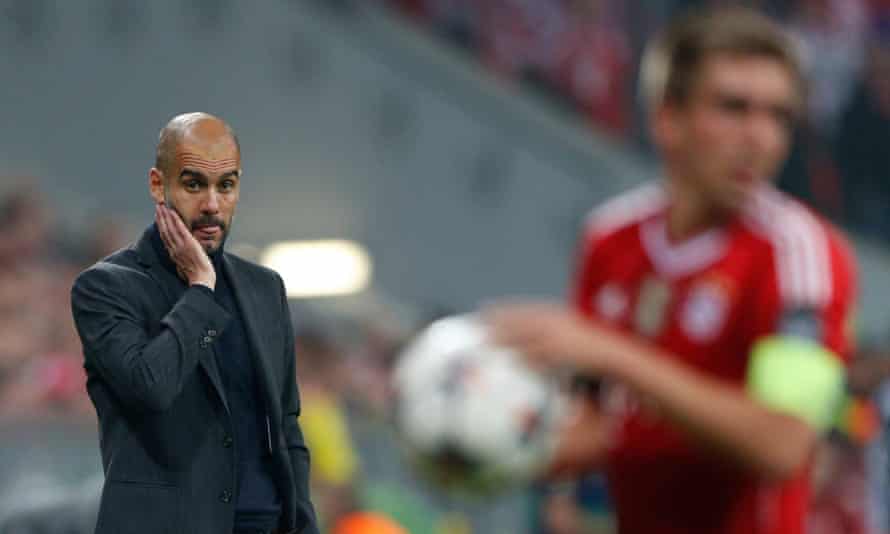
A study at the Karolinska Institute in Sweden found that the brains of top footballers can work quickly “with information” and make “decisions about the environment”. Researchers recruited players from Swedish football’s professional leagues and non-players to assess their “problem-solving, planning – multitasking, cognitive-flexibility and ability to deal with novelty”.
Pros in the top tier registered the highest scores, followed by players from a lower division and then non-players. The performance of the elite players was impressive – they ranked in the top two per cent when compared with the general population. For the following two seasons researchers monitored some of the players and found a correlation between test scores and performance – those with higher test scores had more goals and assists.
The neuroscientists also took the test to Barcelona, where the brains of Xavi and Andrés Iniesta were available for examination. The latter ranked in the top 0.1% for design fluency (ability to generate geometric patterns) and also scored highly in the category of inhibition (the ability to modify your instinctive reaction to a situation in order to complete a task). Xavi’s performance was equally impressive, with the four-time Champions League winner scoring highly for scanning ability, analysis and imagination.
Players require more than a high-speed processor to make smart choices on the pitch. Emotions, the very impulses players are often advised to suppress, are in reality instrumental in their decision-making. Self-control is preached across the game and therefore succumbing to an outburst is seen as a sign of weakness. There’s logic behind this ethos, yet the best players don’t just control their emotions, they channel them.
Michael Thomas doesn’t score that dramatic winner at Anfield without the resilience to overcome a miss earlier in the game. Lionel Messi wouldn’t be able to repeatedly crush the opposition if he couldn’t control his temper under a barrage of kicks and elbows. Jack Grealish doesn’t score the winner in the Birmingham derby if he’s not able to control his emotions after getting whacked by a pitch-invading fan. Pirlo doesn’t panenka Joe Hart during the Euro 2012 penalty shootout between Italy and England without unshakable belief. In the absence of emotional intelligence, technique and athleticism are rendered useless.
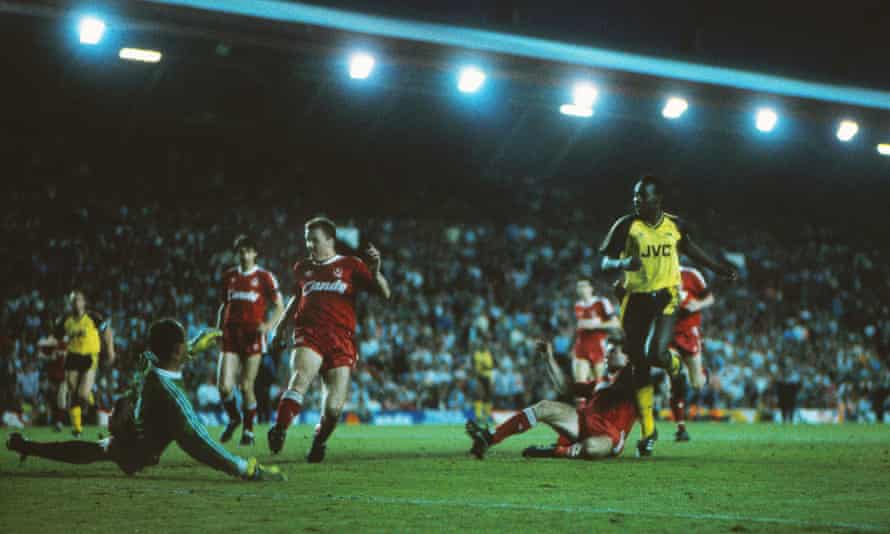
“If athletes can’t manage their emotions in the moment, it doesn’t matter what they’re capable of physically or cognitively – emotions run the show,” said Sullivan. “The process is: see, feel, do, or inhibit action. The way we normally refer to this process is rarely the way it actually works. For example, we see an opening and then our emotions determine whether the option can be successful. Through these successes and errors, we learn the game and the emotional feedback loop and, thus, this becomes the way we know and understand how to operate. Our brain is an emotional system and learning does not happen without emotions. Thus, depending on the speed of hesitation during the game and self-doubt, initial emotional processes can be crippling if we cannot read the game at speed and feel it through. Top athletes develop the total package – physical, emotional and cognitive abilities.”
Clubs across the globe are scouring the earth in search of the next cerebral maestro. Recruitment departments have all the data they could want on physical performance but how do you measure prospects from the neck up? That’s where the people like Tottenham’s talent-spotter Dave Bricknell comes in. He doesn’t have a special piece of equipment that measures football IQ; he just looks out for specific behaviours that point towards an innate understanding of the game.
“From an early age you’re looking to see if a kid has spatial awareness,” he said. “That could be a kid who can dribble around lots of players or a kid who drops into space, gets the ball and looks for a pass. Then as you go up the age groups, you’re assessing their positioning – do they know when to hold or when to go forward? The closer you get to the first team, the more you’re looking for tactical appreciation. Can they take on instructions and adapt during a game? That’s a different kind of intelligence to playing on instinct. Instinct will only get you so far. Then there are players like Harry Kane who have the intelligence to work hard and improve.”
Bricknell was the manager for Ridgeway Rovers when a six-year-old Kane joined the club and immediately stood out for his vision and emotional intelligence. “He could see a pass, he could play,” said Bricknell. “But Harry’s best attribute was his great self-belief. He would score lots of goals, but if it went wide and he didn’t score, he wouldn’t worry about it – he’d just go and get his next chance and try to score again.”
Kane’s remarkable rise from fringe player at Spurs to one of the best strikers in the world is well documented, with his dedication and resilience dragging him to the top. Strikers claim goalscorers are born not bred. But Kane started as a goalkeeper. So, where did he acquire the coordination, timing and awareness to score more than 200 career goals by the age of 26? Are they natural gifts or have these weapons been honed on the training ground?
“There is no natural,” said Ramsey, who helped develop Kane during his time at the club, first as head of player development and then as a first-team coach under Tim Sherwood. “Babies aren’t born as footballers, they need coaching and experience to become an intelligent player. There are great players on Hackney Marshes, but they haven’t been exposed to the level of coaching they need to understand the game. Football intelligence is a product of coaching and experience and how you adapt to it. If you haven’t been exposed to either, you won’t develop an IQ for the game.”
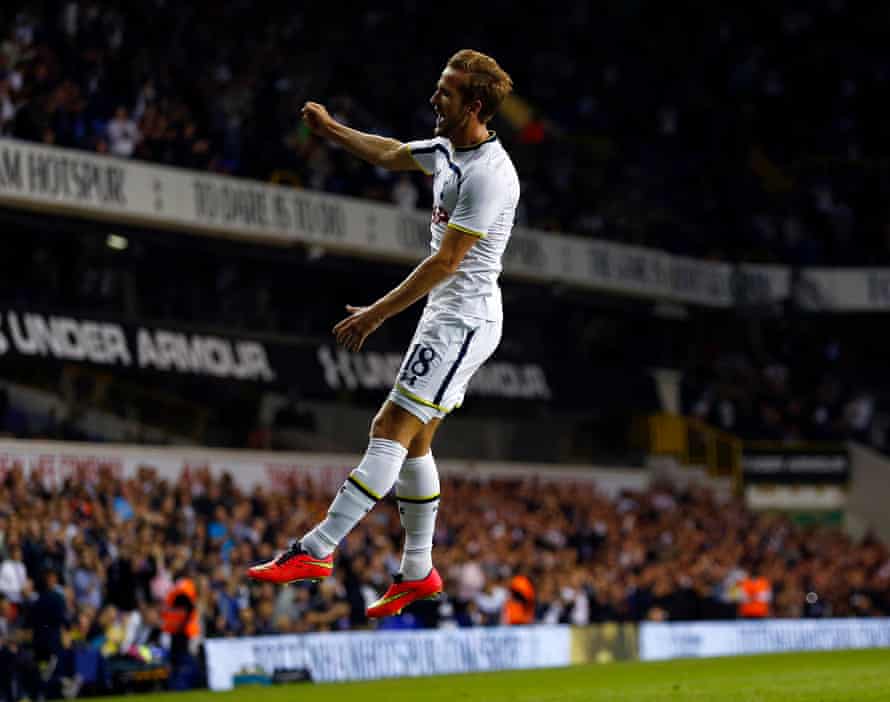
Coaches such as Michel Bruyninckx want to shift the focus away from the physical and on to the psychological. The Belgian has created a curriculum focused on “brain-centred learning” for a group of talented youngsters aged 12-19 selected by the national football federation. He asks his players to complete maths games during conditioning workouts and play in bare feet to make them more “sensorially” aware.
“We need to stop thinking football is only a matter of the body,” he said. “Skilfulness will only grow if we better understand the mental part of developing a player. Cognitive readiness, improved perception, better mastering of time and space in combination with perfect motor functioning.” Anyone questioning his methods need only look at esteemed names among his alumni – Napoli forward Dries Mertens and Royal Antwerp midfielder Steven Defour are the standout graduates. “He has given me that crucial extra metre in my head that is so important,” said Mertens.
By working with young players, Bruyninckx aims to take advantage of an optimal time for learning, strengthening the connections between brain and body. Hardwiring the pathway of communication between a thought and an action – i.e. scanning before receiving the ball in a congested midfield to speed up pass selection – will make a player more efficient. They won’t have to think, it will just happen.
There is data to support this theory. Japanese researchers scanned Neymar’s brain activity while he rotated his right ankle. They also scanned three other professional footballers, two top swimmers and one amateur footballer, all of whom performed the same task. The size and intensity of brain activity was smaller in the four professional footballers than in the three other participants, and Neymar’s activity was smallest of all. Essentially, the movement has become so ingrained in the Brazilian’s brain he doesn’t even have to use it.
Technology companies are trying to devise training equipment that creates shortcuts to this high-level instinctive play. Borussia Dortmund and Hoffenheim use the Footbonaut – a training device that fires balls into players from eight different machines. The number of balls, speed and spin can be altered using a tablet, testing a player’s reaction speed and technique.
Elsewhere, Southampton are using a Virtual Reality training system, Be Your Best, which features a database of 700 interactive scenarios. Players slip on a VR headset to immerse themselves in one of these situations and once three seconds have passed they must assess their options before selecting the correct pass with a hand controller. Whether it’s technological advancements or unique coaching methods, everything is designed to upgrade a player’s intellectual software, to turn a chaotic game into a predictable set of outcomes.
Contrary to popular belief, football intelligence isn’t about thinking, it’s about bypassing the thought process and going straight to the action. “In sport, if you over-think, you’re done. You see it, you feel it, and then you do it. When we are most effective, we’re generally not consciously processing actions. In the game, there’s really no time to think,” said Sullivan.
The idea that you’re born with an innate understanding of the game is misguided. Yes, natural talent is a factor and some individuals are blessed with genetic advantages, but what really talent gives you is an access code to knowledge. It plugs you into a network of high-level coaching.
When Cristiano Ronaldo arrived at Manchester United in 2003 he was a petulant young winger obsessed with tricks. His style of play was the very antithesis of football intelligence. After six years with Alex Ferguson and a dressing room full of world-class players, he developed into an efficient machine that reserved his energy for explosive, result-defining moments. Years of training rewires the brains of elite footballers so they have answers to a 90-minute multiple-choice exam. Perhaps it’s best to let football’s greatest thinker, Johan Cruyff, have the final word. “You play football with your head, and your legs are there to help you.”
• This article was published first on The Blizzard
• Follow The Blizzard on Twitter and Facebook
• Follow Ben Welch on Twitter
[ad_2]
Source link